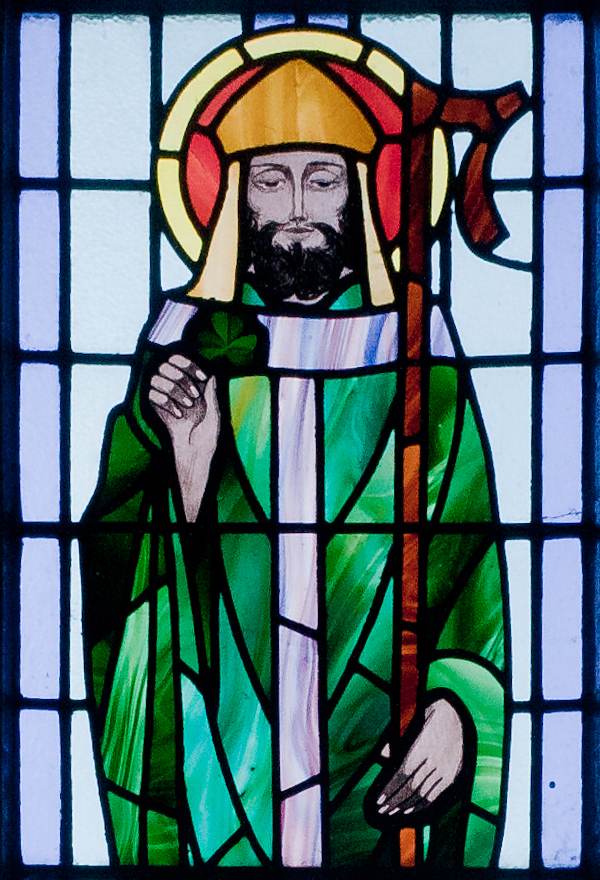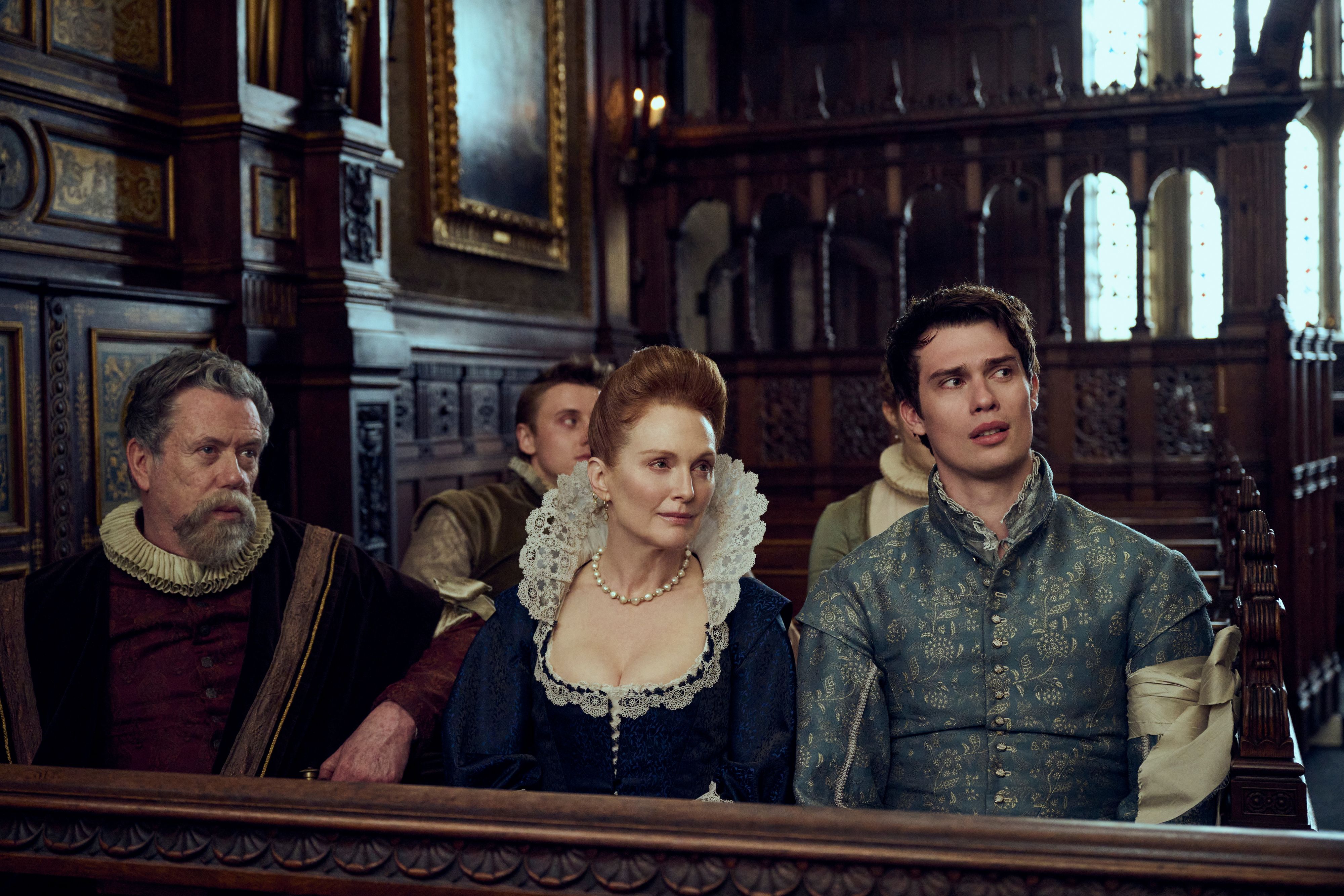We all love a good story, especially when it features intriguing characters who, on the surface, seem to have it all. From the slick kingpins dominating urban landscapes to the historical figures rewriting the rules of power with cunning precision, television has gifted us with a parade of unforgettable personalities and narratives that grab our attention from the very first scene. It’s that blend of ambition, success, and high-stakes drama that keeps us glued to our screens, episode after episode.
But what happens when the glamorous veneer of achievement, or even the compelling struggle for survival, begins to crack? What if the very ‘glam’ that draws us in—the wealth, the influence, the seemingly perfect suburban lives—is merely a cleverly constructed disguise for a deeply complex, often morally ambiguous, reality? We’re often drawn to these characters because of their larger-than-life presence, their undeniable charisma, or the sheer audacity of their goals, only to discover there’s a profound, sometimes shocking, darkness at their core.
Get ready to look beyond the dazzling surface as we embark on a journey to unveil the darker sides of ten iconic figures and captivating premises from the shows that have become cultural touchstones. These aren’t just fictional portrayals or historical accounts; they’re intricate studies in ambition, survival, and the shocking secrets that lie just beneath the polished exterior, proving that sometimes, the truth is far more complex than the spotlight suggests.

1. **The Flenory Brothers and the Black Mafia Family (from BMF)**When you hear about the “Black Mafia Family,” you might first think of an empire, power, and perhaps a certain outlaw mystique. The series “BMF” invites us into the world of two brothers who famously created this organization, described explicitly as ‘the most prominent drug distribution network in American history.’ It’s a tale that quickly draws you in, presenting a narrative of ambition and a relentless pursuit of success within a challenging environment.
The allure, or the ‘glam’ in this context, often comes from the sheer scale of what they built and the undeniable influence they wielded. Imagine navigating the complex, dangerous landscape of an illicit industry and rising to become its ‘most prominent’ player. That level of strategic thinking and sheer force of will is undeniably captivating, often romanticized in popular culture.
However, the ‘darker side’ is inherent in the very definition of their enterprise: a ‘drug distribution network.’ This isn’t just about business acumen; it’s about a criminal organization that, by its nature, contributes to social decay, fuels addiction, and operates through violence and intimidation. The pursuit of power and wealth, in this case, is inextricably linked to devastating consequences for individuals and communities alike.
The show masterfully portrays this duality, allowing viewers to understand the motivations and familial bonds that drove the brothers, while never fully letting us forget the brutal realities of their chosen path. It’s a constant tightrope walk between admiration for their entrepreneurial spirit and a stark confrontation with the moral compromises and human cost of building such an empire.
Ultimately, the story of the Flenory brothers is a powerful reminder that behind the captivating narrative of rising to the top, there lies a profound shadow. The prominence of their network speaks volumes not just about their organizational skills, but also about the vast and destructive reach of a criminal enterprise that became ‘the most prominent drug distribution network in American history.’

2. **The Real Black Mafia Family (from The BMF Documentary: Blowing Money Fast)**If the fictionalized drama of ‘BMF’ draws you in, ‘The BMF Documentary: Blowing Money Fast’ provides the unflinching, ‘informational’ look at the very same empire. This docuseries delves into the Black Mafia Family, but through the lens of verifiable facts and real-world consequences, describing them as having ‘built one of the largest American cocaine empires.’ It’s a powerful companion piece, offering a stark contrast to any romanticized notions.
The initial ‘glam’ of immense wealth and power, often associated with drug lords in popular media, is amplified when you realize it’s all based on truth. The idea of ‘blowing money fast’ itself suggests an almost unbridled opulence, a display of riches that can be superficially dazzling. This is the public perception, the image cultivated by those at the top of such an organization.
But the ‘darker side’ here is not just hinted at; it’s exposed through the factual narrative of building ‘one of the largest American cocaine empires.’ This isn’t just about illicit goods; it’s about the systematic exploitation of vulnerability, the perpetuation of cycles of violence, and the corruption that permeates every layer of such an operation. A documentary format strips away any pretense, revealing the cold, hard facts.
The docuseries, by design, focuses on conveying information clearly and concisely, making complex or sensitive topics understandable for a general audience. It forces viewers to confront the stark reality of how such an empire was forged, not through fictional plot points, but through actual events and documented consequences. This factual approach makes the ‘darker side’ even more visceral and undeniable.
Therefore, ‘The BMF Documentary’ serves as a critical mirror, reflecting the true cost of the Black Mafia Family’s rise and fall. It underscores that while the wealth might have been real and the power undeniable, the foundation was built on a vast ‘cocaine empire,’ a structure that brought untold suffering and a lasting legacy of criminal activity. It’s the ultimate ‘truth behind the glam,’ presented without embellishment.

3. **The Deceptively Friendly Neighbors (from The Couple Next Door)**Imagine moving into a brand-new suburban neighborhood, a fresh start, a seemingly idyllic setting. ‘The Couple Next Door’ introduces us to a young couple who do just that, and almost ‘instantly strike up a friendship with their new neighbors.’ This premise immediately evokes a sense of comfort, community, and the promise of new, positive connections in a serene environment. It’s the quintessential image of suburban bliss, where everyone is welcoming and life unfolds predictably.
The ‘glam’ here lies in the idealized vision of suburban life and the immediate camaraderie. Who wouldn’t want perfect, friendly neighbors right next door? The convenience, the shared laughter over the fence, the easy companionship – it all paints a picture of domestic harmony. This initial charm makes the eventual unraveling all the more unsettling, because it plays on our deeply held desires for security and belonging.
However, the show immediately introduces a chilling question that shatters this perfect facade: ‘But are they a bit too friendly?’ This subtle, yet potent, query is where the ‘darker side’ begins to emerge. ‘Too friendly’ isn’t just about being overly social; it implies a boundary being crossed, an intrusion, or perhaps a hidden agenda lurking beneath the surface of seemingly innocent interactions. It hints at a violation of trust that can occur even in the safest-looking places.
The narrative expertly crafts a growing sense of unease, forcing viewers to question every smile, every gesture, and every shared moment between the couples. The innocent appearance gives way to psychological tension, as we are led down a path where the definition of ‘friendly’ becomes distorted, revealing potential manipulation, obsession, or even a sinister plot. The erosion of trust becomes a central theme, highlighting how easily our perceptions can be twisted.
Ultimately, ‘The Couple Next Door’ powerfully illustrates that the ‘darker side’ isn’t always overt or criminal; it can be insidious, hiding behind the very politeness and accessibility we seek in our neighbors. It’s a chilling exploration of how even the most idyllic-seeming situations can harbor disturbing truths, where friendliness might mask something far more sinister than we could ever imagine, making us question everyone around us.
4. **Mary Villiers and George Villiers (from Mary & George)**Step into the opulent, treacherous world of historical power struggles with ‘Mary & George.’ The show centers on a mother and son duo, depicted as determined individuals, set on a singular, audacious goal: ‘to conquer the Court of England and the bed of King James I.’ The sheer ambition and the high-stakes environment of royalty make for a truly compelling narrative, promising intrigue and drama on an epic scale.
The ‘glam’ is undeniably in the lavish setting and the ultimate prize: immense power and influence at the heart of the English monarchy. To ‘conquer the Court’ implies a level of social ascension and political maneuvering that is both dazzling and aspirational, in a purely strategic sense. The idea of controlling a monarch through personal relationships adds another layer of scandalous fascination, appealing to our inner desire for power and control.
But the ‘darker side’ of Mary and George is laid bare with explicit clarity right in the synopsis: they ‘schemed, seduced and killed.’ This isn’t a subtle implication; it’s a direct declaration of their ruthless methods. Their path to power was paved with calculated deception, sexual manipulation, and ultimately, murder, revealing a chilling disregard for morality in pursuit of their grand designs.
The series pulls back the curtain on the cutthroat nature of court politics, where appearances are everything, but survival often demands the most brutal of tactics. Their ambition transcended ethical boundaries, showing how personal gain could completely overshadow any sense of duty or humanity. It’s a stark illustration of how far some are willing to go when driven by an insatiable hunger for control.
Therefore, Mary and George stand as a potent example of how the ‘glam’ of royal power can mask truly ‘treacherous’ individuals. Their story is a dramatic historical account of how ambition, when unconstrained by conscience, can lead to a horrifying array of ‘scheming, seduction, and killing’ in the relentless quest to dominate both a monarch and an entire court.

5. **The Feminist Publisher and Her Erotic Magazine (from Minx)**Transport yourself back to the 1970s Los Angeles, a period of profound social change and burgeoning new ideas. ‘Minx’ introduces us to ‘an earnest young feminist [who] joins forces with a low-rent publisher to create the first erotic magazine for women.’ This premise immediately sets up a vibrant, almost revolutionary, tableau of breaking barriers and redefining norms, especially concerning female sexuality and empowerment. It’s about pushing boundaries in a world ripe for change.
The ‘glam’ here emanates from the idealism of the feminist movement and the groundbreaking concept of an ‘erotic magazine for women.’ It’s the allure of challenging patriarchal norms, of creating something truly revolutionary that aims to empower women by giving them a voice and a platform to explore their desires without shame. This vision of liberation is incredibly powerful and aspirational, resonating with anyone who champions progress and self-expression.
However, the ‘darker side,’ or perhaps more accurately, the ‘messy truth,’ immediately surfaces with the detail of the ‘low-rent publisher.’ This isn’t a slick, well-funded venture; it suggests compromises, moral ambiguities, and the gritty, unglamorous realities of trying to achieve a noble goal through less-than-ideal means. The clash between high ideals and a grungier execution is a central tension.
Moreover, the very nature of an ‘erotic magazine’—even one ‘for women’—was, and can still be, controversial. While intended for empowerment, the medium itself can easily be misconstrued or fall into traps of objectification, particularly in an era still grappling with these concepts. It’s about navigating a morally ambiguous space, where intentions and outcomes can sometimes diverge, leading to unforeseen complications and criticisms. This duality is what gives the show its edge.
Ultimately, ‘Minx’ brilliantly captures the complex journey of forging new paths in the realm of female sexuality. The ‘darker side’ is not necessarily malice, but rather the challenging, often compromising, and certainly unglamorous reality of trying to redefine female empowerment and sexuality through a medium that has historically been used to exploit, all while operating with a ‘low-rent publisher.’ It’s the fascinating, complicated truth behind the liberating ideal.

6. **James “Ghost” St. Patrick (from Power)**If ever there was a character who embodied the dazzling illusion of having it all, it’s James “Ghost” St. Patrick from the hit series “Power.” The official description paints a picture of ultimate success: a ‘beautiful wife, a Manhattan penthouse, and New York’s hottest nightclub.’ Seriously, talk about living the dream! He’s the kind of guy who, on the surface, makes you think he’s got life completely figured out, running a high-end club that’s the talk of the town and living a lifestyle most of us can only fantasize about. That polished, sophisticated image is definitely the ‘glam’ that first draws you into his world.
But here’s the kicker, and where the story truly grips you: that shiny exterior is a meticulously crafted disguise for a far grittier reality. The very same description reveals his colossal ‘darker side’ with an undeniable truth: ‘But he’s also the kingpin of the…’ And then it drops the bomb, the illicit empire that funds his lavish life. This isn’t just a side hustle; it’s a massive, dangerous criminal enterprise that constantly threatens to unravel his entire meticulously built persona.
The tension in ‘Power’ comes from watching Ghost constantly battle to maintain this dual identity. He desperately wants to go legitimate, to shed the ‘kingpin’ label and live purely in the light, but the underworld has a way of clinging on, pulling him back into its dangerous embrace. Every decision, every interaction, is fraught with the risk of exposure, not just to the authorities, but to the people he loves and who believe in the illusion of James St. Patrick. His entire existence becomes a high-wire act of deception, constantly teetering on the edge of catastrophe.
Ultimately, James St. Patrick is the poster child for the ‘truth behind the glam.’ His narrative is a powerful exploration of how ambition, when entangled with illegal activities, creates a web of complications that can never truly be escaped. It shows that even with a ‘beautiful wife, a Manhattan penthouse, and New York’s hottest nightclub,’ the hidden cost of being a ‘kingpin’ is a constant, suffocating darkness that overshadows every achievement and makes his idolized image a tragic illusion.

7. **The World of P-Valley**Sometimes, it’s not just one person, but an entire world that captivates us with its undeniable allure, even as it hides a profound struggle. Enter ‘P-Valley,’ a series that transports viewers ‘Down deep in the Mississippi Delta’ to what’s described as ‘an oasis of grit and glitter.’ Just reading that, you can picture the vibrant lights, the pulsating music, the mesmerizing performances – it’s a place that promises escape, excitement, and perhaps a touch of magic, even if it’s found in an unexpected corner of the world. This is the magnetic ‘glam’ of P-Valley, a space where beauty, talent, and dazzling spectacle flourish.
However, the very next phrase cuts through that shine with a stark reminder of reality: ‘in a rough patch of human existence where beauty can be hard to find.’ This reveals the profound ‘darker side’ of this seemingly glamorous ‘oasis.’ It tells us that while there’s undeniable sparkle, it’s built on a foundation of hardship, struggle, and often, desperation. The characters who inhabit this world are fighting for survival, for dignity, and for a chance at a better life, often using the very glitter they embody as a shield or a tool.
The narrative of ‘P-Valley’ brilliantly explores this duality. It showcases the resilience and artistry of the performers, their dreams, and their incredible talent, making it easy to get lost in the dazzling performances and the vibrant energy of the club. But it never shies away from the harsh truths of their lives: the economic struggles, the personal demons, the societal prejudices, and the constant threat of violence or exploitation that lurks just beneath the surface of the stage lights. It’s a compelling look at the choices people make to survive and thrive in challenging circumstances.
The series demands that we look beyond the captivating spectacle and acknowledge the raw, often painful realities that define this ‘rough patch of human existence.’ It makes us question the true cost of the ‘glitter’ and how much ‘grit’ is truly required to maintain it. It’s a testament to the power of storytelling to expose the complexities of human experience, proving that what looks like a simple oasis is, in fact, a deeply intricate landscape of dreams, desperation, and enduring strength.

8. **Catherine de Medici (from The Serpent Queen)**Stepping back in time to the intricate world of royalty, we encounter Catherine de Medici, the central figure of ‘The Serpent Queen.’ The mere mention of her becoming ‘one of the most powerful and longest-serving rulers in French history’ immediately conjures an image of formidable intellect, strategic mastery, and immense influence. This is the undeniable ‘glam’ of Catherine – a woman who ascended to the pinnacle of power in a male-dominated era, leaving an indelible mark on history. Her reign speaks of a legacy forged through sheer will and political prowess, commanding respect and perhaps a touch of awe.
Yet, the title of the series itself, ‘The Serpent Queen,’ is a powerful, immediate hint at her ‘darker side.’ A serpent is often associated with cunning, deception, and danger. To be a ‘Serpent Queen’ implies that her path to becoming one of the ‘most powerful and longest-serving rulers’ was not paved with traditional virtue, but rather with ruthless tactics, intricate manipulations, and a willingness to do whatever was necessary to secure and maintain her position. It suggests a queen who was not afraid to strike when provoked, or even proactively, to protect her interests and legacy.
The show masterfully delves into the Machiavellian world of court politics, where survival and power often demanded moral compromises. It explores the cutthroat environment she navigated, showcasing how Catherine’s actions, though perhaps justified in her own context, often involved deception and cruelty. Her story isn’t just about ruling; it’s about the intricate and often brutal strategies she employed to outmaneuver her enemies, secure alliances, and ensure the future of her dynasty, often at a significant human cost.
Through Catherine de Medici, ‘The Serpent Queen’ unpacks the complex reality of historical power. The ‘darker side’ is revealed not as random evil, but as a calculated, often brutal, necessity for a woman determined to not only survive but thrive in a treacherous world. It forces us to confront the uncomfortable truth that behind the grandeur and historical significance of a ‘powerful and longest-serving ruler,’ there often lies a chilling story of unwavering resolve, strategic ruthlessness, and the willingness to shed blood for the throne.

9. **Rhiannon Lewis (from Sweetpea)**Finally, let’s talk about Rhiannon Lewis from ‘Sweetpea,’ a character whose narrative promises a truly unsettling transformation. The official synopsis teases us with a compelling arc: ‘Rhiannon Lewis’ life transforms as she steps into a new, intoxicating power.’ This phrase alone creates an image of liberation, empowerment, and perhaps a thrilling journey of self-discovery where a seemingly ordinary person unlocks an extraordinary, compelling inner strength. The ‘intoxicating power’ is the ultimate ‘glam’ here – the allure of breaking free from constraints and embracing a potent, almost addictive, personal agency that redefines her existence.
But the very next part of the description immediately introduces the chilling ‘darker side’: ‘but can she keep her killer secret?’ This isn’t a subtle hint; it’s a direct, shocking reveal that her newfound ‘intoxicating power’ is intertwined with a grave, violent truth. The glamour of transformation is instantly overshadowed by the chilling reality of a ‘killer secret,’ suggesting that her empowerment might come at a terrifying cost, or perhaps, be inherently rooted in something sinister.
The series pulls back the curtain on the psychological complexities of a character grappling with this profound duality. It explores the intoxicating thrill of wielding such power, while simultaneously delving into the immense burden and moral implications of harboring a dark secret. The audience is invited to witness her struggle to maintain a semblance of normalcy, to hide the truth from the world, and perhaps even from herself, as her inner world becomes a battlefield between her new strength and the consequences of her actions.
‘Sweetpea’ is a fascinating study of how power can corrupt, and how a hidden truth can consume. The ‘darker side’ of Rhiannon Lewis is not just a single act, but the ongoing psychological toll and the constant threat of exposure that her ‘killer secret’ imposes. It asks us to consider whether true empowerment can ever be achieved when it’s built upon such a perilous foundation, and whether the allure of ‘intoxicating power’ is worth the price of a haunted conscience.
Rhiannon Lewis stands as a compelling example of a character whose ‘glam’ is intrinsically linked to her ‘darker side.’ Her story is a chilling reminder that sometimes, the most profound transformations are born from, and forever shadowed by, the deepest and most dangerous secrets. It’s a gripping exploration of the human psyche when confronted with an ‘intoxicating power’ that simultaneously offers liberation and eternal damnation.




